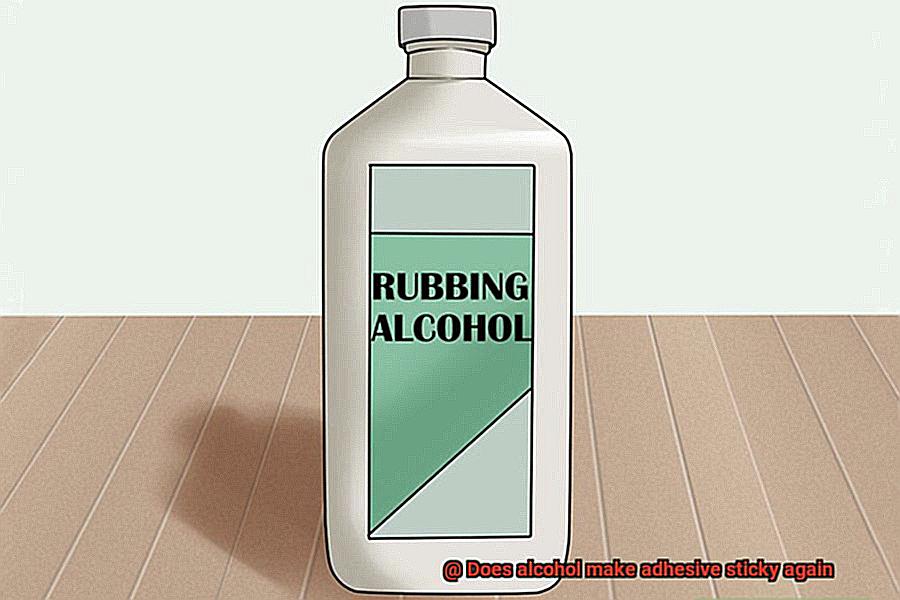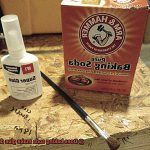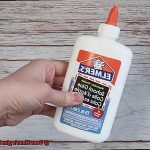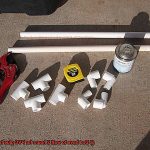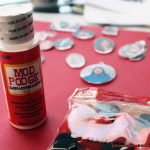Ever found yourself in a sticky mess, desperately needing your adhesive to work its magic but failing miserably? We’ve all been there, my friend. It’s like watching your trusty sidekick turn into a total slacker. But fear not. Enter alcohol – that mystical elixir known for its powers of transformation. Could it be the secret ingredient to revive your adhesive and make it sticky again? Buckle up as we dive headfirst into the fascinating world of alcohol’s relationship with adhesives. Brace yourself for a wild ride of discovery, where assumptions will be shattered and curiosity will run wild. Get ready to uncover the truth once and for all.
What is Adhesive?
Contents
- 1 What is Adhesive?
- 2 Causes of Adhesive Loss of Stickiness
- 3 Can Alcohol Restore the Stickiness of Adhesive?
- 4 Understanding the Composition of Adhesive
- 5 How Does Alcohol Affect the Stickiness of Adhesive?
- 6 Cleaning Surfaces with Alcohol
- 7 Is it Possible to Make Adhesive Sticky Again?
- 8 Preparing Surfaces for Reapplication of Fresh Adhesive
- 9 Conclusion
Adhesive, often referred to as glue, is a versatile and powerful substance that plays a vital role in industries ranging from construction to crafts. In this blog post, we will dive into the captivating world of adhesives, exploring their composition, working mechanisms, and various types. So, let’s embark on this sticky adventure together.
Adhesive is any substance used to bond two surfaces together securely. From liquid adhesives to pastes, tapes, and sprays, it comes in a wide array of forms. Adhesives create a strong bond between materials, ensuring they stay firmly joined.
Types of Adhesives:
- Cyanoacrylate adhesives: Known as superglue, these adhesives instantly bond when exposed to moisture.
- Epoxy adhesives: Composed of a resin and hardener, epoxy adhesives form a durable and robust bond.
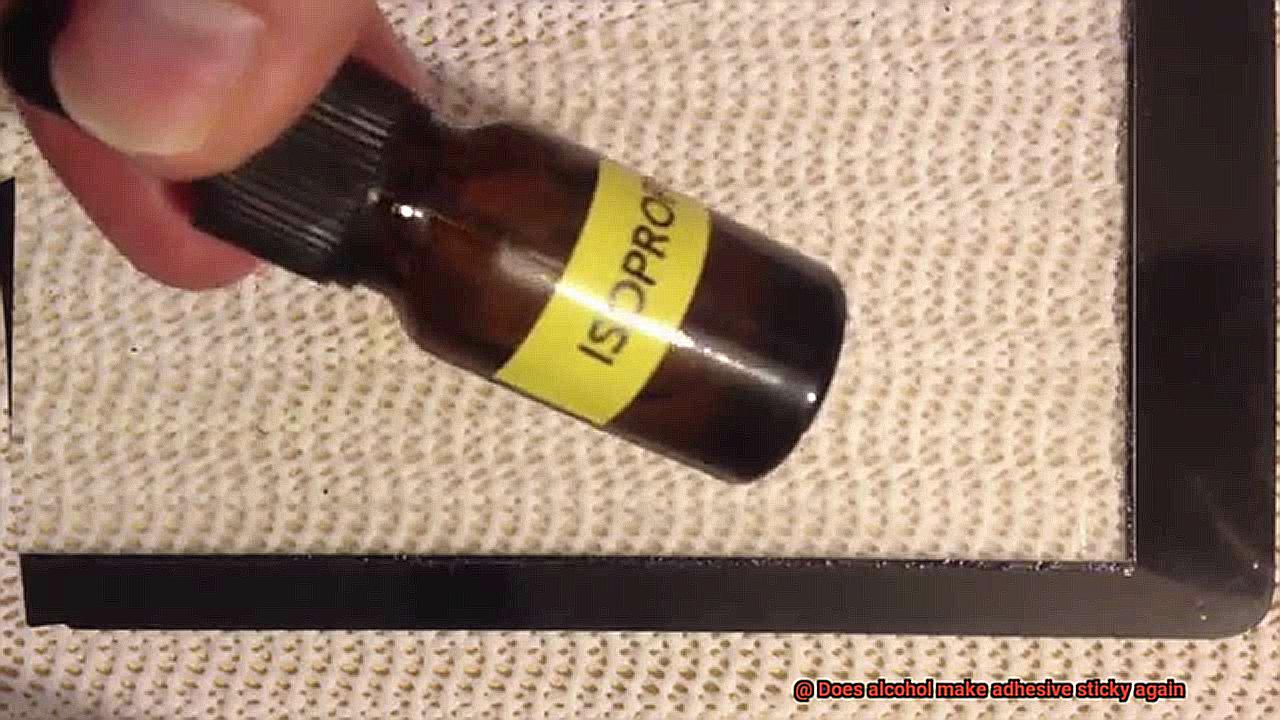
Polyurethane adhesives: Versatile in nature, they can bond a wide range of materials effectively.
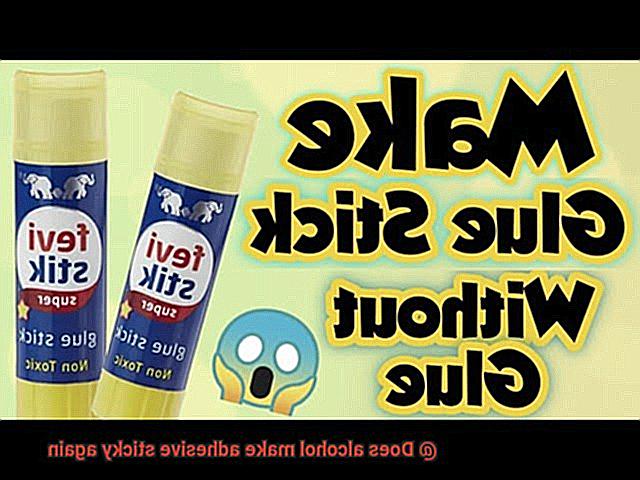
How Do Adhesives Work?
Adhesives work through physical or chemical mechanisms. Some adhesives create a physical bond through intermolecular forces, while others chemically react with the surface they are applied to.
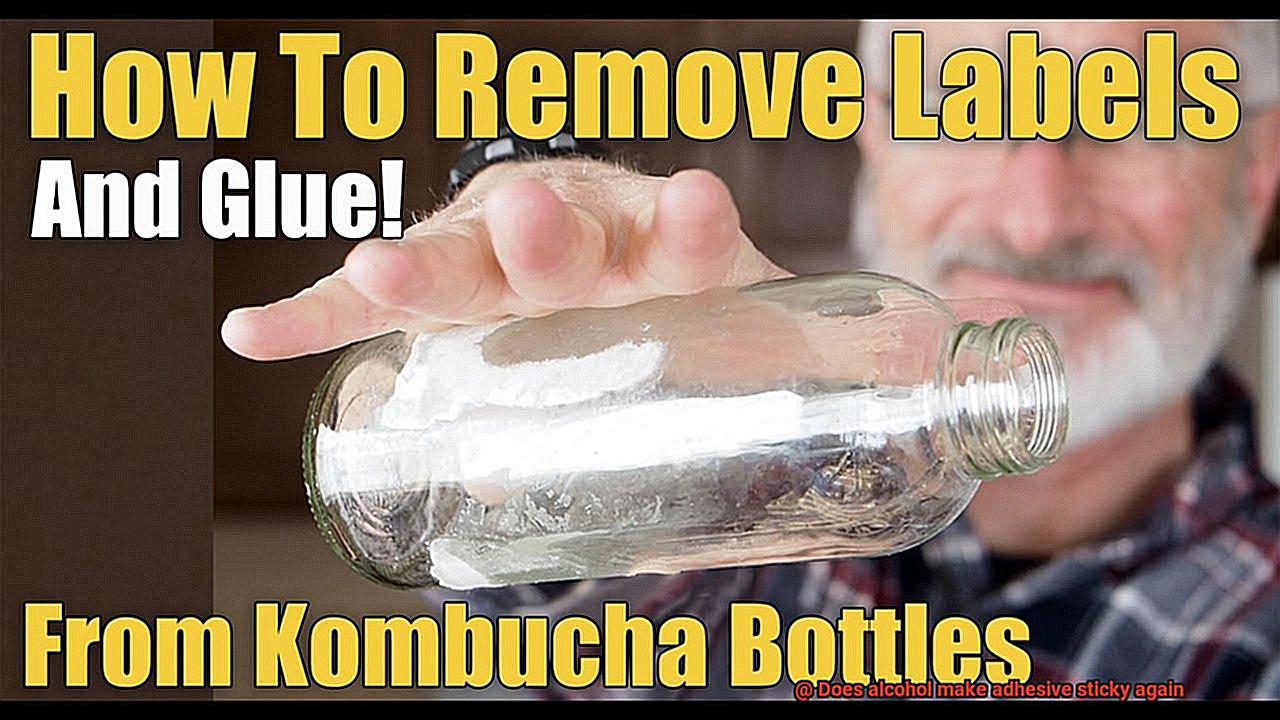
Applications and Benefits:
Adhesives find applications in numerous industries such as construction, automotive, aerospace, and crafts. They offer increased structural integrity, improved aesthetics, and enhanced functionality. With their ability to distribute stress evenly and absorb vibrations, adhesives provide alternatives to traditional bonding methods like mechanical fasteners and welding.
Can Alcohol Restore Sticky Adhesive?
While alcohol effectively removes adhesive residue and cleans surfaces, it cannot restore the stickiness of adhesive once it has been lost. The stickiness of adhesive relies on molecular bonds that cannot be regenerated by alcohol alone. Properly cleaning and preparing surfaces before applying fresh adhesive is crucial for a strong and long-lasting bond.
Causes of Adhesive Loss of Stickiness
Adhesive loss of stickiness can be a frustrating experience. From loose handles to peeling corners, we’ve all encountered this annoyance. In this blog post, we will dive into the world of adhesives and explore the various causes of adhesive loss of stickiness, equipping you with valuable insights to prevent it.

Environmental Conditions:
- High Temperatures: When faced with excessive heat, adhesives can melt or break down, resulting in a loss of stickiness.
- Humidity: Excessive moisture weakens adhesive bonds through water absorption or the growth of mold and mildew.
- Dust and Dirt: These pesky particles create a barrier between the adhesive and the surface, preventing a strong bond.
Improper Application:
- Uneven Application: A haphazardly applied adhesive leads to weak or inconsistent bonding.
- Insufficient or Excessive Adhesive: Too little or too much adhesive compromises its effectiveness.
- Poor Surface Preparation: Neglecting to clean or sand the surface hinders proper adhesion.
Chemical Interactions:
- Solvents and Cleaning Agents: Certain chemicals react with adhesives, weakening their bonding properties.
- Exposure to Substances and Environments: Oils, UV radiation, and other substances cause adhesives to deteriorate over time.
Can Alcohol Restore the Stickiness of Adhesive?
We’ve all been there – a sticky situation where our once trusty adhesive just doesn’t seem to stick anymore. But before you reach for that bottle of alcohol, let’s explore the science behind it.
Alcohol is commonly used as a solvent to remove adhesive residue from surfaces. Its ability to dissolve substances makes it an effective cleaner for sticky messes. However, when it comes to restoring the stickiness of adhesive, things get a bit more complicated.
The effectiveness of alcohol in reviving adhesive stickiness depends on various factors. First and foremost, the type of adhesive plays a crucial role. For adhesives like cyanoacrylate or super glue, alcohol can actually reactivate their sticky properties. These types of adhesives form strong bonds when exposed to moisture, and alcohol provides just enough moisture to get them back in action.
But not all adhesives are created equal. Epoxy or polyurethane adhesives, for example, rely on chemical reactions or curing processes to form strong bonds. In these cases, alcohol may not be able to reverse these processes and restore their stickiness.
Another consideration is the surface the adhesive is applied to. Some materials or finishes may be sensitive to alcohol and can be damaged by its use. It’s always a good idea to test a small inconspicuous area before applying alcohol to the entire surface.
Even if alcohol does temporarily restore the stickiness of your adhesive, it may not last for long. Once the alcohol evaporates, the adhesive may lose its stickiness again. Furthermore, using alcohol on adhesive can potentially affect its overall performance and durability. The effectiveness of the adhesive after exposure to alcohol may be compromised.
So before you reach for that bottle of alcohol to revive your adhesive, consider the type of adhesive, the surface it’s applied to, and the potential consequences. In some cases, it may be more beneficial to explore alternative solutions or replace the adhesive altogether.
Understanding the Composition of Adhesive
Adhesive composition is a fascinating subject that plays a crucial role in determining the performance of this magical substance. To truly understand adhesive composition, we must delve into its key components, including polymers, solvents, fillers, and additives.
At the heart of adhesive composition lies the polymer. Imagine a giant molecule composed of smaller units called monomers. The type of polymer used in an adhesive greatly influences its strength and flexibility. The polymer acts as the backbone of the glue, providing the foundation for a strong bond.
But there’s more to adhesive composition than just polymers. Solvents are also essential players in the adhesive game. These clever substances dissolve other materials, making them easier to apply. Solvents reduce viscosity, improving how thick or thin the glue is, while also enhancing wetting and aiding in the formation of a solid bond. They work hand in hand with polymers to deliver optimal performance.
Now, let’s not forget about fillers. These secret ingredients enhance the overall performance of adhesives. By making them stronger and more durable, fillers add that extra touch of magic. They can even provide special properties like heat resistance or electrical conductivity. Fillers are the unsung heroes behind exceptional adhesive performance.
And what about additives? They are like the spice rack of adhesive composition. Additives serve various purposes, from improving shelf life to enhancing adhesion to specific surfaces. They can even add color and texture to adhesives, providing those finishing touches that make them truly unique.
Understanding adhesive composition goes beyond knowing its ingredients; it’s also about comprehending how these components impact performance. The specific ingredients used in an adhesive depend on its intended application. For example, adhesives used in woodworking may contain resins or oils to bond better with wood surfaces, while adhesives used in electronics may incorporate conductive materials to ensure proper electrical connections. Adhesive composition is all about tailoring the glue to meet specific needs.
Now, let’s address the million-dollar question: using alcohol on adhesives. While alcohol can be a useful tool for removing adhesive residue, its effects on stickiness can vary. Some adhesives are more resistant to alcohol and retain their stickiness even when exposed to it. Others may lose their adhesive properties when alcohol is applied. It’s a chemistry game where the ingredients interact in unpredictable ways.
In general, alcohol acts as a solvent and weakens the bond between the adhesive and the surfaces it’s meant to bond. Alcohol dissolves certain components of the adhesive, such as polymers or fillers. However, here’s the twist – alcohol can sometimes reactivate certain types of adhesives and make them sticky again. It temporarily softens or dissolves adhesive components, allowing them to flow and reestablish a bond when the alcohol evaporates. It’s like witnessing a glue resurrection.
Before embarking on an alcohol spree, caution is essential. Alcohol can damage certain surfaces or cause discoloration. It’s always wise to test a small, inconspicuous area before applying alcohol to an adhesive to see how it reacts.
How Does Alcohol Affect the Stickiness of Adhesive?
In the vast realm of crafting and DIY projects, adhesive reigns supreme as the unsung hero. It binds, it repairs, it transforms. But what happens when alcohol enters this delicate equation? Does it morph into a cunning antagonist, sabotaging our beloved adhesive? Strap in as we journey through the captivating world of glue chemistry to uncover the truth.
The Solvent Effect:
Alcohol, armed with its enchanting solvent powers, wields a formidable impact on adhesive stickiness. When it encounters certain adhesives like super glue, it becomes a molecular wrecking ball, obliterating the adhesive’s intricate structure and undermining its bonding capability. So, if you yearn to pry apart something joined by super glue, alcohol may just be your clandestine ally.
Adhesive Type Matters:
Not all adhesives are created equal in their vulnerability to alcohol’s charms. There exist resilient adhesive varieties like epoxy-based ones, impervious to the assaults of solvents. These tough cookies establish robust chemical bonds that withstand the might of solvents like alcohol. Hence, if your creative endeavors involve epoxy-based adhesives, fear not the inadvertent spillage of your cocktail upon your latest masterpiece.
Surface Tension Troubles:
Alcohol, mischievous as it is, can play wicked tricks on adhesive by tampering with its surface tension. Picture smearing peanut butter on bread slathered with butter – an exercise in futility. Similarly, when applied to adhesive, alcohol diminishes its surface tension, rendering it arduous for the adhesive to spread and adhere with tenacity. Thus, tread cautiously when employing alcohol on adhesives that necessitate a robust bond.
Temporary Setbacks:
Though alcohol may temporarily debilitate or annul adhesive stickiness, redemption is not out of reach. Once alcohol evaporates or is wiped away, the adhesive often reclaims its original bonding prowess. However, exceptions exist – particularly if the adhesive has endured substantial weakening or if the surface has suffered alcohol-induced damage. Hence, proceed with caution, testing first in an inconspicuous nook before fully committing.
Cleaning Surfaces with Alcohol
While alcohol can be a highly effective cleaning agent, it’s crucial to understand its limitations and exercise caution when dealing with different types of adhesives.
The Mighty Power of Alcohol:
Isopropyl alcohol (IPA), known for its ability to dissolve oils and greases, is a superhero in the world of cleaning agents. When used correctly, it can effectively remove dirt and grime from surfaces, including adhesive surfaces. Its exceptional power lies in its ability to prepare the surface by eliminating any residual oils or contaminants that may hinder proper adhesion.
Adhesive Compatibility Matters:
Not all adhesives are created equal, and their compatibility with alcohol varies. Before proceeding with alcohol-based cleaning, it is crucial to consult the manufacturer’s instructions or seek expert advice. Adhesives made from rubber or certain plastics can be sensitive to alcohol, potentially leading to damage or weakening of the adhesive.
The Unexpected Reactivity:
One must tread cautiously when using alcohol on adhesive surfaces as it can sometimes cause unexpected reactions. In some cases, alcohol can dissolve adhesive components and then evaporate, leaving behind a sticky residue. To avoid this sticky situation, always perform a small test on an inconspicuous area before applying alcohol to the entire surface.
Sticky Situations:
Using alcohol on already sticky or tacky adhesive surfaces may not yield desirable results. Stickiness can arise from factors other than contaminants, such as the age or quality of the adhesive itself. Therefore, using alcohol alone may not effectively restore the adhesive’s stickiness in such cases.
Is it Possible to Make Adhesive Sticky Again?
We’re about to dive into the captivating world of adhesive rejuvenation. Today, we’ll explore the potential effects of using alcohol to make adhesive sticky again. So, grab your lab coats and safety goggles, and let’s embark on this experiment.
Before we start dousing our glue with isopropyl alcohol, it’s crucial to understand that not all adhesives are created equal. Some may dance with joy at the sight of alcohol, while others might crumble in fear. It all depends on the type of adhesive and the specific circumstances. So proceed with caution.
Alcohol, renowned for its ability to dissolve substances and clean surfaces, has been hailed as a potential savior for dried-out adhesives. However, this holds true mainly for non-water-based adhesives. Water-based ones, unfortunately, may not be so lucky. In fact, applying alcohol to these adhesives could do more harm than good, weakening or breaking them down further.
Now, how can you determine if alcohol is your adhesive’s knight in shining armor? Well, it’s always best to conduct a small test on a discreet area before going all-in. This way, you can gauge how the adhesive reacts and avoid any sticky situations (pun intended).
If alcohol doesn’t do the trick or risks damaging your precious surface or material, fear not – we have other methods up our sleeves. Consider applying heat or moisture to reactivate the adhesive’s stickiness. Alternatively, specialized adhesive reactivators or primers could come to your rescue. And if all else fails, don’t be afraid to bite the bullet and replace the adhesive altogether.
So, there you have it. While alcohol may be a potential candidate for reviving your adhesive’s stickiness, it’s crucial to tread carefully and consider alternative methods if need be. Nobody wants a glue mishap in the midst of a crafting project or while desperately trying to fix that broken doodad.
Preparing Surfaces for Reapplication of Fresh Adhesive
Preparing surfaces for reapplication of fresh adhesive is a crucial step in ensuring a strong and durable bond. Whether you are dealing with glue, tape, or stickers, proper surface preparation is essential for optimal adhesion. Let’s explore the various methods and techniques to effectively prepare surfaces for reapplication.
- Remove existing adhesive residue: Start by removing any existing adhesive residue using alcohol. Dampen a clean cloth or cotton ball with isopropyl alcohol or rubbing alcohol and gently rub the affected area. The alcohol will break down the adhesive, making it easier to remove. Use a gentle rubbing motion to avoid damaging the surface. Once the residue is gone, wipe the area clean with a damp cloth.
- Restore stickiness: While alcohol can remove residue, it may not always make the adhesive sticky again. If your adhesive has dried out or lost its stickiness, additional steps may be necessary. Try warming up the adhesive using a hairdryer on low heat. The heat will soften the adhesive and make it sticky again. Be cautious not to overheat and damage the surface.
- Apply a fresh layer of adhesive: If heating doesn’t restore stickiness, consider applying a fresh layer of adhesive. This can be done by adding a thin layer of glue or adhesive tape over the existing adhesive. The fresh layer will reactivate the existing adhesive, making it sticky again. Ensure that the fresh adhesive is compatible with the existing one to avoid negative reactions or weakening of the bond.
uM5WnIp0Poo” >
Conclusion
To conclude, while alcohol can be a powerful ally in eradicating adhesive residue and readying surfaces for reapplication, its ability to resurrect lost stickiness varies depending on several factors. The type of adhesive and the surface it clings to play pivotal roles in determining whether alcohol can work its magic.
For adhesives like cyanoacrylate or super glue, alcohol acts as a catalyst that reignites their sticky properties. These adhesives thrive when they encounter moisture, and alcohol provides just enough moisture to set them ablaze once again. However, not all adhesives are created equal. Adhesives such as epoxy or polyurethane rely on intricate chemical reactions or curing processes to establish robust bonds. In these cases, alcohol may lack the power to reverse these processes and rekindle their stickiness.
Furthermore, it’s crucial to consider that using alcohol on adhesive can potentially impact its overall performance and durability. Before dousing the entire surface, it’s imperative to conduct a small-scale test in an inconspicuous area to avoid any potential damage or negative reactions.

